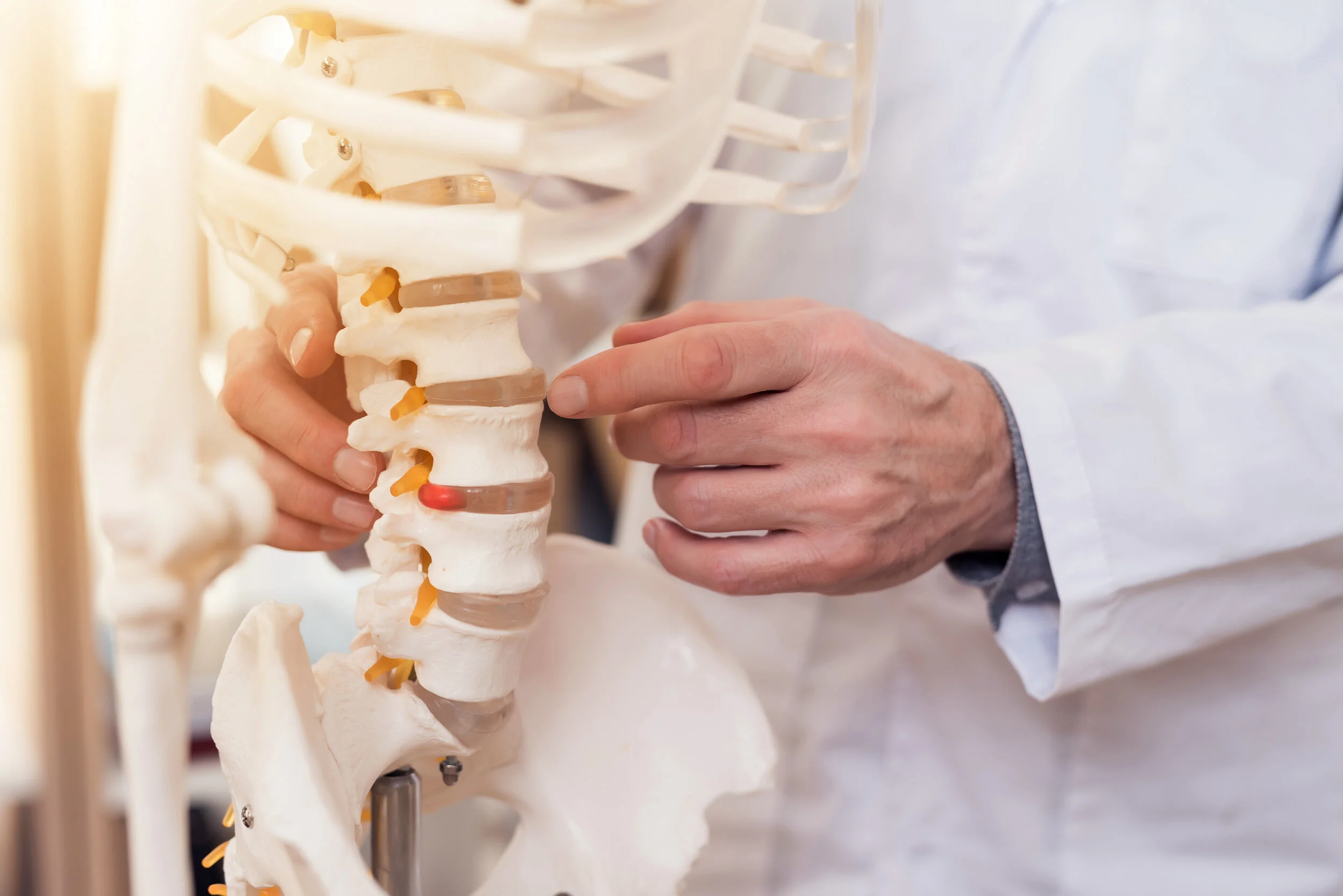About The Spine
The spine is made up of a series of connected bones called “vertebrae.” These encircle and protect the spinal cord. The disc is a combination of strong connective tissues that hold one vertebra to the next and act as a cushion between the vertebrae.
Nerves branch from the spinal cord and pass through openings in the vertebrae to other parts of the body. These nerves send messages from the brain to the rest of the body. Several of these nerves also join at the base of the spine to form the sciatic nerve, which runs down the leg.
The normal anatomy of the spine is divided up into 3 major sections: the cervical, the thoracic, and the lumbar spine. And, below the lumbar spine is a bone called the sacrum, a part of the pelvis. These designations divide the vertebrae of the spine into sections. There are 7 cervical vertebrae, 12 thoracic vertebrae, and 5 lumbar vertebrae.
An individual vertebra is made up of several parts. The body of the vertebra is the primary area of weight bearing and provides a resting place for the fibrous discs separating each of the vertebrae.
The spinal canal, a hole in the center of your spine, runs through the stacked vertebra. It is through this hole that spinal nerves pass. The lamina covers this spinal canal.
The spinous process is the boney part of the spine you feel when running your hands down your backbone. The transverse processes are paired and oriented 90 degrees to the spinous process. These provide attachment of the back muscles.
